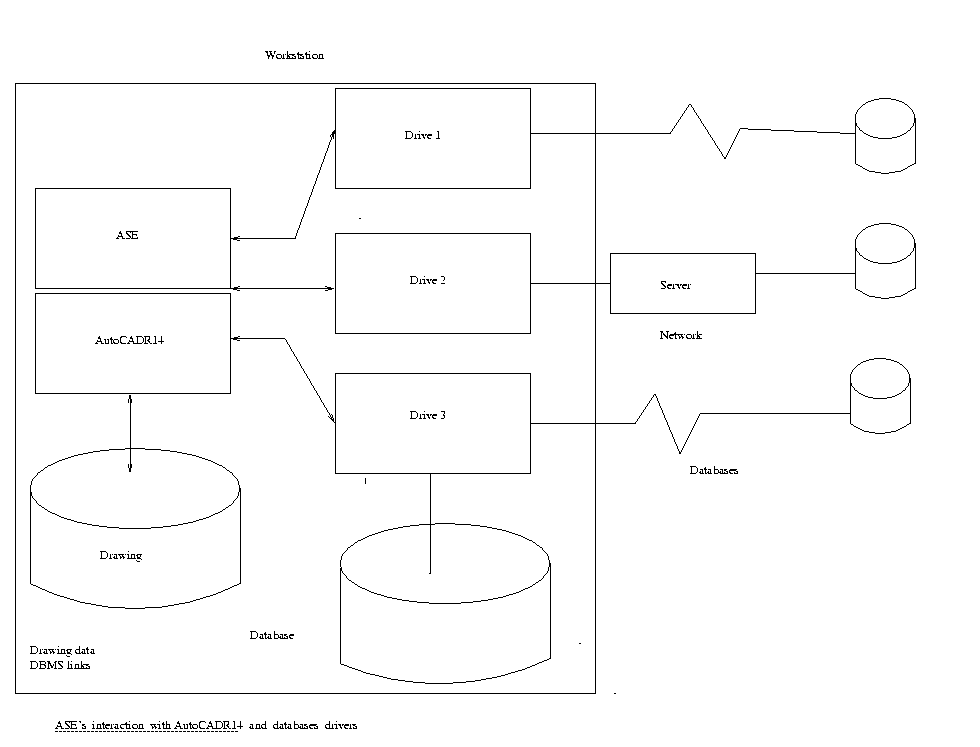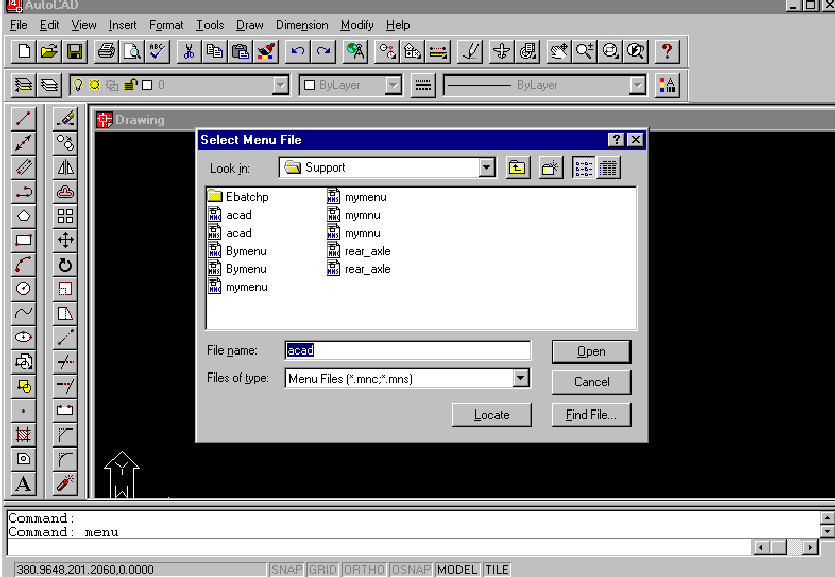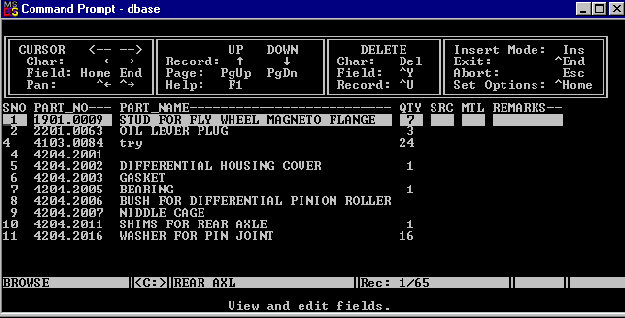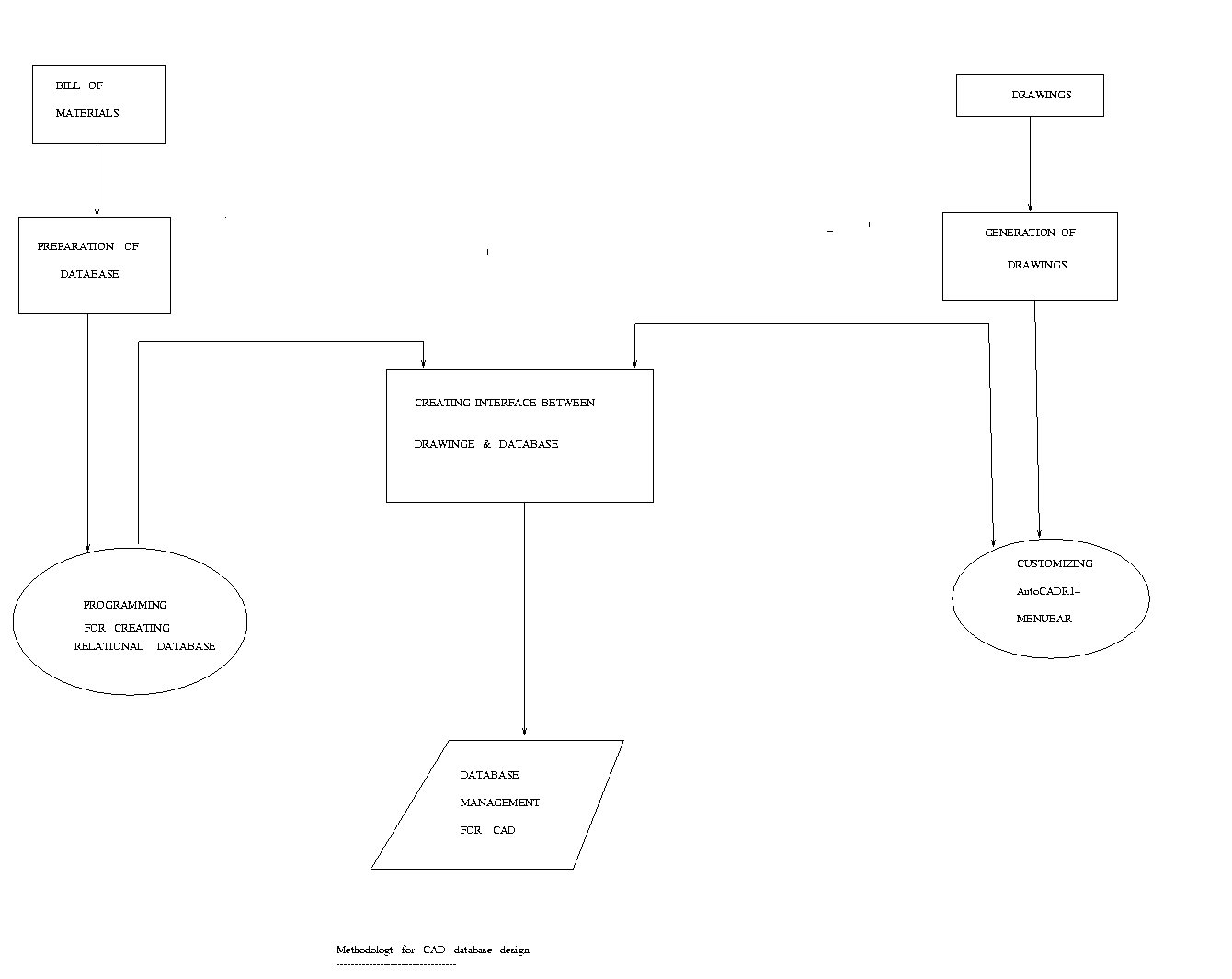FEATURES OF AutoCADR14 SQL EXTENSION
(ASE) WITH FUNCTIONAL OVERVIEW
Introduction to The AutoCADR14 SQL Extension (ASE):
The AutoCADR14 is provided with SQL features called AutoCAD STRUCTURED
QUERY LANGUAGE ( ASE). AutoCADR14 SQL Extension (ASE) facilitates to access
and manipulate non-graphic data stored in external databases. ASE provides
with direct access from within AutoCADR14 to external database management
system (DBMS) such as dBASE, INFORMIX, ORACLE etc. ASE provides the same
command regardless of the database in use. ASE application is used to manipulate
data for bills of materials( database ), asset management, estimating,
or to directly access a standard parts database. It helps to establish
connections between objects in the drawing and data in the database. The
ASE facilitates to manipulates external data and links it to AutoCADR14
graphic entity.
FEATURES OF AutoCADR14 SQL Extension
(SQL):
ASE provides three features that enables
AutoCAD to access data in external databases: a command set, database drivers,
and a programming interface. Linking graphic entities in the drawings to
the external non-graphic data provides the following:
-
Commands to access and manipulate data
in external databases from within AutoCADR14 with or without using SQL
syntax.
-
Commands to create and manipulate links
between non-graphic data in external databases and all graphic entities
in AutoCADR14 drawings.
-
Commands to view and manipulate linked
non-graphic data from AutoCADR14.
-
Object selection based on graphic and
non-graphic data.
-
Displayable attributes(text entities
that display data values in linked, non-graphic databases) that can be
updated automatically if data changes.
ASE FUNCTIONAL OVERVIEW:
ASE commands provides to attach, or
link, graphic entities in an AutoCADR14 drawing to a row or rows in an
external database. The resulting non-graphic data is available to the DBMS
even when the drawing is not loaded in the AutoCADR14; the data is stored
in the native external database format. The database links are stored in
the AutoCADR14 drawings. Links can be modified only when the drawing containing
them is loaded into AutoCADR14. The database values can, however, be changed
either from within AutoCADR14 or from within AutoCADR14 or from within
the DBMS. Both AutoCADR14 and the DBMS access the same data; changes made
by either are reflected whether viewing the data using or using the DBMS
directly.
The relationship between AutoCADR14
entities and external databases is a many-to-many relationship. AutoCADR14
entity can be attached to none, one, or many rows. Fig. shown below
gives the relationship between ASE and DBMS drivers.

LINKING DBASE FOR WINDOWS WITH
AutoCADR14 :
There are two types of databases drivers supplied with AutoCADR14: drivers
used to directly connect to specific database applications, such as Oracle
and dBASE; and ODBC drivers used to connect to any database application
that has a corresponding ODBC interface (Open Database Connectivity).ASE
provides a set of database drivers, each of which lets us to connect to
an external database. The AutoCAD SQL interface, ASI, lets to create
AutoCAD-specification applications that can access external databases.
Requirements for AutoCADR14 ASE and dBASE for windows are as follows:
-
AutoCAD Release 14
-
Windows, Windows NT
-
dBASE for Windows
-
Microsoft ODBC driver kit 3.0
Defining Keys:
When an entity is linked with data in an external database,
specification of the row or rows in the database table is needed via a
key. A key, in turn, specifies a column or set of columns in the table
against which the column values are matched. For example, if the key column
is AutoCADR14 and a value of 1901.0009 is specified, the PART_NO column
of the table must have a value of 1901.0009 to match. A unique key matches
only with one row in a table.
Same thing in our has been done to match an entity linked
with data in external database. Specification of row or rows is already
shown in the fig. of dBASE environment. What we select the PART_NO column
as the characteristic to match with the unique row shown in the database
table. PART_NO is already specified for the standard drawing.


 In the dBASE III PLUS DBMS, sub directories
represent the logical database and dBASE III PLUS .dbf represent the tables.
For all this an environment is set named WINNT/DBASE.
The figure shown above gives details
about our database design for a specific drawing with different attributes.
The same structure of our database is used to show in AutoCADR14 environment.
In the dBASE III PLUS DBMS, sub directories
represent the logical database and dBASE III PLUS .dbf represent the tables.
For all this an environment is set named WINNT/DBASE.
The figure shown above gives details
about our database design for a specific drawing with different attributes.
The same structure of our database is used to show in AutoCADR14 environment.

